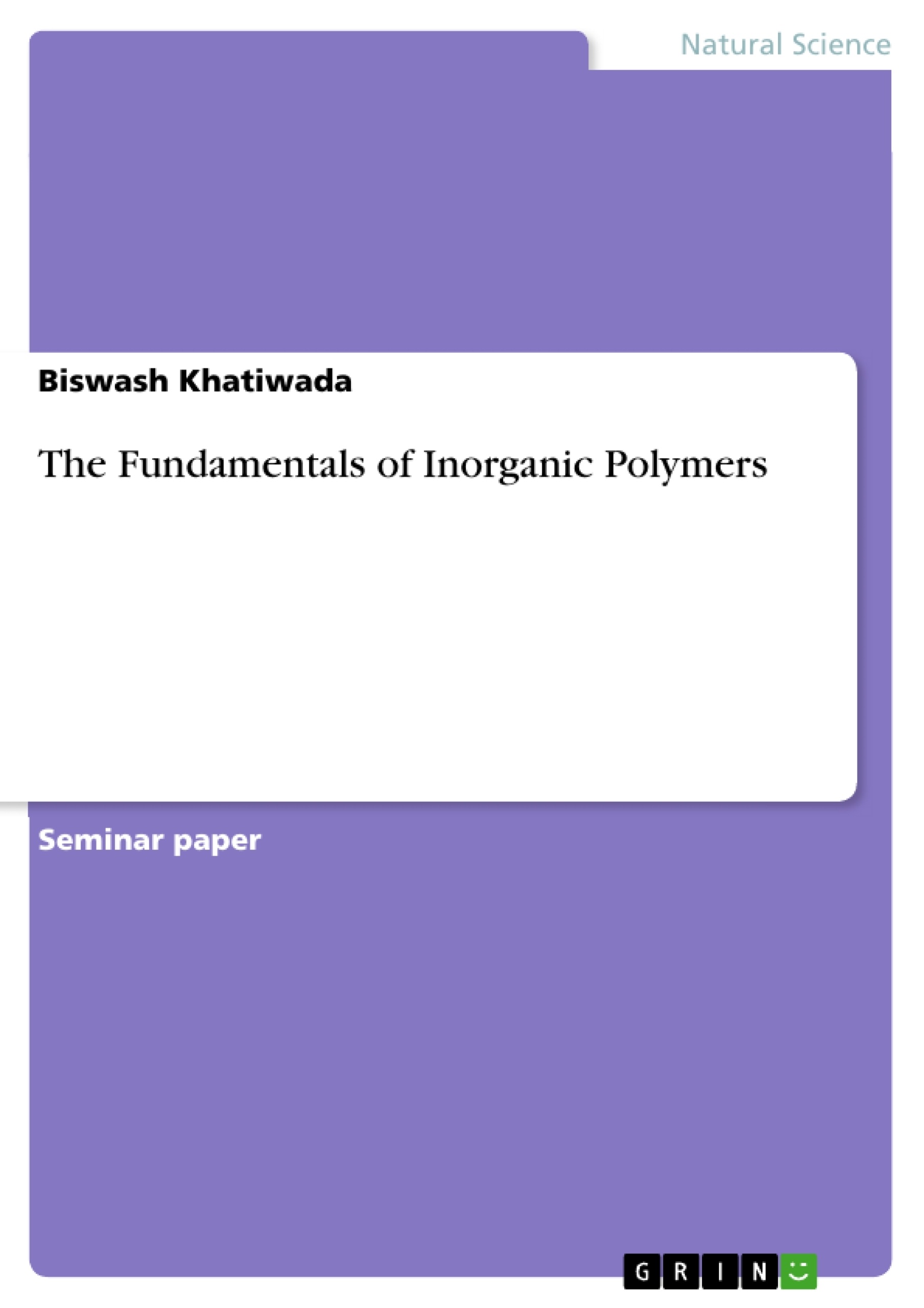Introduction: This introductory chapter defines polymers, explaining their molecular structure and classification based on their source (natural or synthetic). It introduces the concept of monomers and polymerization, providing a foundation for understanding the subsequent discussion of inorganic and organic polymers.
Unravel the hidden world of macromolecules beyond carbon! Delve into the fascinating realm of inorganic polymers, materials with properties that defy conventional plastics and resins. This comprehensive exploration dissects the fundamental differences between organic and inorganic polymers, revealing their contrasting behaviors in flammability, biodegradability, and thermal stability. Discover the unique synthetic pathways and sources of these often-overlooked materials, and understand why they are essential for a wide array of cutting-edge applications. Journey into the heart of silicon-based polymers – silicones – and uncover the secrets behind their remarkable water repellency, high-temperature resistance, and versatile uses in industries ranging from construction to cosmetics. From the initial production of alkyl or aryl substituted silicon chlorides to the final polymerization of silicols, this guide meticulously details the three-step preparation of silicones, illuminating the intricate chemistry involved. Explore the environmental impact and rising importance of biodegradable polymers as sustainable alternatives. Whether you're a seasoned materials scientist or a curious student, this book provides a clear and insightful understanding of the diverse world of polymers, emphasizing the often-underestimated potential of inorganic macromolecules and silicon-oxygen bonds. Understand the nuances of polymerization, the role of monomers, and the impact of these materials on our world. Discover the countless applications of polymers, from everyday household items to advanced technological components. Embark on a journey that redefines your understanding of material science and unlocks the secrets of these extraordinary compounds. Explore the contrasting characteristics of organic and inorganic polymers, their solvent solubility, and their varying strengths. Discover the future of materials, from the lab to real-world applications, as it is impacted by these materials. This is your guide to understanding the next generation of polymer technology and its profound impact on industries worldwide. Learn how their unique attributes are paving the way for unprecedented innovations and sustainable solutions.
Table of Contents
Objectives and Key Themes
This paper aims to provide an overview of inorganic polymers, focusing on their manufacturing, applications, and comparison to organic polymers. It explores the significance of biodegradable polymers and details the properties and uses of silicon-based polymers as a prominent example.
- Manufacturing and sources of inorganic polymers
- Applications and importance of biodegradable polymers
- Comparison of organic and inorganic polymers
- Detailed examination of silicon-based polymers (silicones)
- Properties and uses of silicones
Chapter Summaries
Inorganic Polymers: This section defines inorganic polymers, highlighting their composition—macromolecules with atoms other than carbon in their backbone chains—and contrasting them with organic polymers, which have carbon backbones. It sets the stage for the detailed exploration of specific types of inorganic polymers in later sections.
Organic Polymer: This section defines organic polymers, emphasizing their carbon-based backbone chains and their prevalence among synthetic polymers. It serves as a comparative point to the inorganic polymers discussed in the preceding section, highlighting the key differences between these two polymer classes.
Differences between Organic and Inorganic Polymers: This chapter directly compares and contrasts organic and inorganic polymers across several key properties. It highlights differences in their flammability, biodegradability, strength, softening points, and solvent solubility, providing a clear understanding of their distinct characteristics.
Silicon Based Polymers: This chapter focuses on silicon-based polymers, also known as silicones or polysiloxanes. It details their preparation, which involves a three-step process beginning with the production of alkyl or aryl substituted silicon chlorides, followed by hydrolysis to form silicols, and finally, the polymerization of silicols to yield the final silicone polymers. The chapter also thoroughly discusses the properties and uses of silicones, emphasizing their unique attributes like high temperature stability and water repellency, and their various applications in different industries.
Keywords
Inorganic polymers, organic polymers, silicones, polysiloxanes, polymerization, monomers, biodegradable polymers, properties of polymers, applications of polymers, silicon-oxygen bonds.
Häufig gestellte Fragen
Was ist der Fokus des Dokuments über anorganische und organische Polymere?
Dieses Dokument gibt einen umfassenden Überblick über anorganische Polymere, ihre Herstellung und Anwendungen. Es vergleicht sie mit organischen Polymeren, wobei insbesondere die Bedeutung biologisch abbaubarer Polymere und die Eigenschaften von Silikonpolymeren hervorgehoben werden.
Was sind die Hauptziele des Dokuments?
Die Hauptziele sind die Beschreibung der Herstellung und der Quellen anorganischer Polymere, die Hervorhebung der Bedeutung biologisch abbaubarer Polymere, der Vergleich organischer und anorganischer Polymere, die detaillierte Untersuchung von Silikonpolymeren (Siliconen) sowie die Erläuterung ihrer Eigenschaften und Verwendungen.
Was sind die wesentlichen Unterschiede zwischen organischen und anorganischen Polymeren?
Organische Polymere haben eine Kohlenstoffkette, während anorganische Polymere andere Atome als Kohlenstoff in ihren Hauptketten haben. Weitere Unterschiede bestehen in Entflammbarkeit, biologischer Abbaubarkeit, Festigkeit, Erweichungspunkten und Löslichkeit in Lösungsmitteln.
Wie werden Silikonpolymere hergestellt?
Die Herstellung von Silikonen umfasst drei Schritte: Zuerst die Herstellung von Alkyl- oder Aryl-substituierten Siliziumchloriden, gefolgt von der Hydrolyse zur Bildung von Silicolen und schließlich die Polymerisation von Silicolen, um die endgültigen Silikonpolymere zu erhalten.
Welche Eigenschaften haben Silikone?
Silikone zeichnen sich durch eine hohe Temperaturbeständigkeit und Wasserabweisung aus.
Welche Schlüsselwörter sind für das Thema des Dokuments relevant?
Die relevanten Schlüsselwörter sind: Anorganische Polymere, organische Polymere, Silikone, Polysiloxane, Polymerisation, Monomere, biologisch abbaubare Polymere, Eigenschaften von Polymeren, Anwendungen von Polymeren, Silizium-Sauerstoff-Bindungen.
Was sind Beispiele für die Verwendungen von Siliconen?
Silicone werden in verschiedenen Industrien für ihre einzigartigen Eigenschaften genutzt.
- Quote paper
- Biswash Khatiwada (Author), 2021, The Fundamentals of Inorganic Polymers, Munich, GRIN Verlag, https://www.hausarbeiten.de/document/1436324


